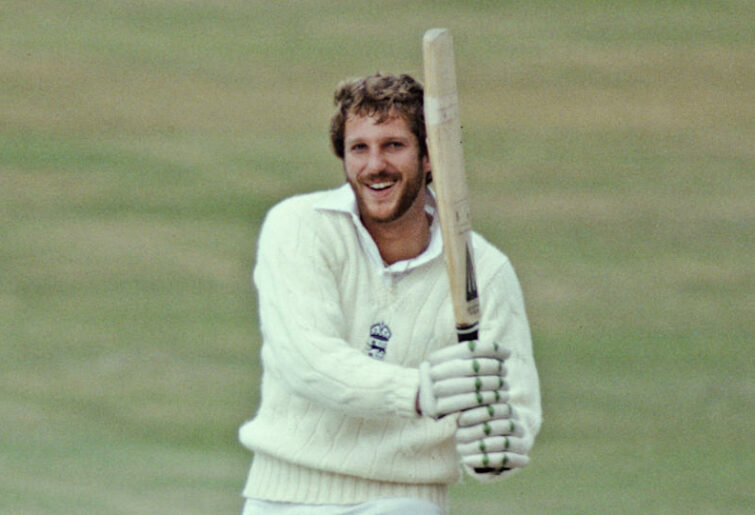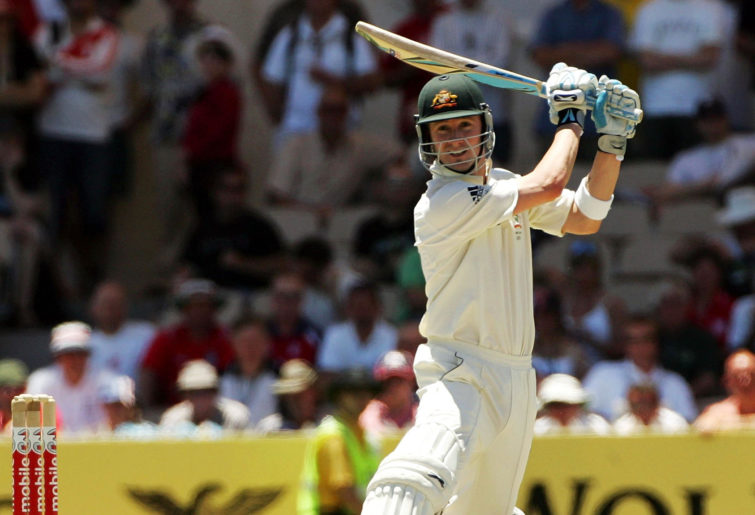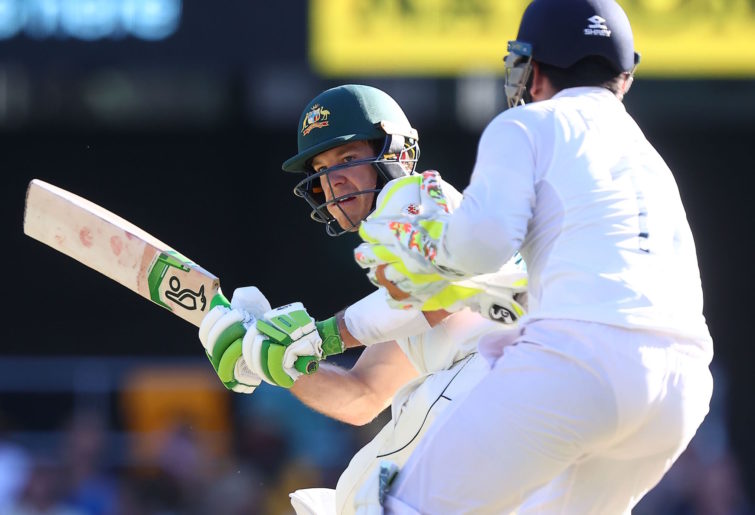Aussie cricket fans believing there is some sort of voodoo hovering over our Test team chasing small fourth-innings targets is similar to a small child believing there are monsters hiding under his or her bed or in the cupboard.
There are people like Ivan Milat or Jack the Ripper, and there was also 1981, when the Australian team lost all three Tests where they chased a target of less than 152. These diabolical losses came in the space of a mere five Tests, so clearly there was something wrong with our team culture at that specific time.
It is probably no mere coincidence that this was also right smack bang in the middle of the extremely disruptive criss-crossing back and forth of the captaincy between Greg Chappell and Kim Hughes, depending on which tours Gregory didn’t make.
Between late 1979 and mid-1983, the two swapped the captaincy a grand total of eight times. With all the tensions simmering in the dressing room on the 1981 Ashes tour, is it any wonder that they lost focus so easily in the middle of what should have been two totally elementary Test match victories?

(Photo by Adrian Murrell/Allsport/Getty Images/Hulton Archive)
However, that was all but unprecedented, to my knowledge, in Australian cricket, and also more than 40 years ago. In the last 40 years the stats read, courtesy of esteemed fellow roarer JGK, 13-3 in favour of successful sub-150 chases and a whopping 28-2 in favour of successful chases in the 150-200 range.
After the run chase nightmares of 1981, which began at the MCG against India in early February of that year, it would be almost another 13 years before we screwed up another run chase of less than 150.
During that time frame we successfully chased down targets of (two wickets for) 69, (three wickets for) 188, (two wickets for) 83, (six wickets for) 127, (six wickets for) 260, (one wicket for) 97, (three wickets for) 82, (four wickets for) 119, (one wicket for) 81, (no wickets for) 152, (two wickets for) 197, (two wickets for) 128 and (two wickets for) 120.
Rightly not included in the above are times we chased really low targets, such as getting 0-3 to win by ten wickets, as well as times being bowled out for low scores chasing unattainable targets, such as 114 chasing 400.
The Mark Taylor and Steve Waugh captaincy eras saw us take our target chasing up a notch by successfully chasing down 270 after trailing by 101 on first innings, 369, which at the time was the third highest successful chase ever as well as 334.
Then, just for good measure, in the Ricky Ponting era we chased down 307 after trailing by more than 150 on the first innings. Further on down, under Michael Clarke, we chased down just a tick over 300, with the clock ticking down in the face of numerous interruptions on account of inclement weather to square a two-Test series.

(Photo by Hamish Blair/Getty Images)
Of the three failed run chases of targets under 150 in the last 40 years, there was one each under Allan Border, Taylor and Ponting. Two of these can actually be all but completely contextualised.
In the sixth Test at the Oval in 1997, we fell for 104 chasing 120. There were other mitigating factors. It was at the Oval and the opposition had batted first, and to this day, no Ashes Test at the Oval has been won batting second since 1972, and I believe it’s not a hell of a lot better for chasing sides there in non-Ashes fixtures. It was also a low scoring match, 240, I believe, was the only team total above 200.
It is always recommended to play at least one specialist spinner at the Oval, sometimes two even, and Australia were cleaned up in that run chase by a spinner, Phil Tufnell, who was such an Oval specialist that he even took 7-25 there six years earlier to bowl England to victory over the West Indies, when they were still mighty, to square that particular series at 2-2.
However, the biggest factor, for mine, was the dead rubber syndrome, which was a peculiar quirk specific to the otherwise glorious Taylor era. Under his skippership, we won nine series in succession, and more than 50 per cent of Tests played.
However, we also lost six out of nine dead rubbers, winning only two, and one of those mainly because we had pride to play for having already lost a rare series at the time as well as the extra incentive to win our first individual Test match in India for 28 years.

(Credit: Mike Hewitt /Allsport/Getty Images)
Then there was the dead rubber where we muffed a clean 3-0 sweep by allowing the Kiwi number ten and 11 rabbits to survive for nearly ten overs in their second innings before time ran out on the final day. In that final 1997 Test at the Oval, we were already 3-1 up in the series.
Mumbai in 2004 was also a dead rubber. Though losses in dead rubbers still occurred in the post-Taylor era (early 1999) to pre-Shane Warne and Glenn McGrath retirements (2007) era under Steve Waugh, Adam Gilchrist and Ponting, the syndrome was eliminated to the tune of 16 wins and five losses. Interestingly, there were no draws in such dead rubbers in that eight-year period.
A dead rubber factor, rather than syndrome, probably played its part in this (Mumbai 2004) loss, though I’m not sure it was necessarily the leading factor. It’s more than possible that they switched off at some point in the euphoria of Australia’s first Test series win in India in nearly 35 years, but that switch-off point probably occurred mid-way through the match rather than at the start of it, and certainly not at the end of the previous (series-sealing) Test.
The first thing to not lose sight of is that this was an extremely low-scoring Test – a mere 605 runs across four completed innings. In such an instance, if the side batting first prevails, then a failed run chase of well under 150 would not be such a big deal – one of the two sides has to lose after all. Even a successful run chase of not too much more than 100, under the circumstances, would likely see a significant number of fourth-innings wickets fall in any case.

(Photo by Simon Cross/Getty Images)
Secondly, Michael Clarke took 6-9 to finish India’s second innings off so it was obviously a raging turner, and India had Harbhajan Singh and Anil Kumble, so again, in such a low-scoring match, anything over 100 was going to be difficult.
Finally, Australia probably lost their grip on this match, not in the run chase itself, but by the fact that Sachin Tendulkar and VVS Laxman made 55 and 69 respectively in India’s second innings, India’s only two half tons of the match. Get them for five and ten then Australia actually win by an innings. It was that fine a line in that particular context of that particular contest.
The only one of Australia’s three failed sub-150 run chases of the last 40 years that I can find no mitigating circumstances for is Sydney, January 1994, against the South Africans. I don’t even want to talk about it and I shan’t.
I will never come to terms with that one, just as I would never have come to terms with Headingley or Edgbaston 1981 had I been following the game by then. Fortunately, my debut was held back until the following home summer, so as a fan, I am not scarred by those.
So, to sum up, with a win-loss ratio of 41-5 in run chases of under 200 over the last 40 years, and presumably no worse in the 104 and a half years prior to that, Australia has never had any sort of voodoo for chasing such targets, bar one solitary year of madness: 1981. Losses completely against the grain do occur, but they happen extremely rarely and there has never been any need to make a mountain out of a mole hill in this regard.
Actually, Australia has only failed once, in the last 17 years, to chase down a victory target of even less than 200, and that was the second Test in India in 2017. Since 2004, the mythical evil creature that is mis-represented as the tricky fourth-innings sub-150 target has not come back to haunt us – not under Clarke, not under Steve Smith, and not even under Tim Paine.

(Photo by Patrick Hamilton/AGP via Getty Images).
Given all this, it is complete folly, and grossly lacking any remote sort of perspective whatsoever, to think that a team batting third in a Test match trails by 150 or more and then manages to get 100-150 in front has suddenly become favourites.
I don’t need to research other countries’ performances in the same circumstances to be able to safely say that they have not fared any worse than the aforementioned Australia.
For example, there have been four occasions in Ashes series in England, starting in 1985, when England have been confronted with a fourth-innings run chase of between 100 and 150 and they have not failed in any single one of them, scoring 5-123, 1-120, 7-129 and 2-120 odd.
I would think, as a rule of thumb, that a side batting third needs to get at least 200 in front before it even becomes an even game, and, under normal everyday majority circumstances, targets set don’t venture into the genuinely difficult to chase region until they extend beyond 250.
I would take a conservative stab in the dark and suggest that on the large majority of occasions, teams batting third do end up managing to set fourth-innings targets of 200 or over unless they are less than 100 behind to begin with.

































































































